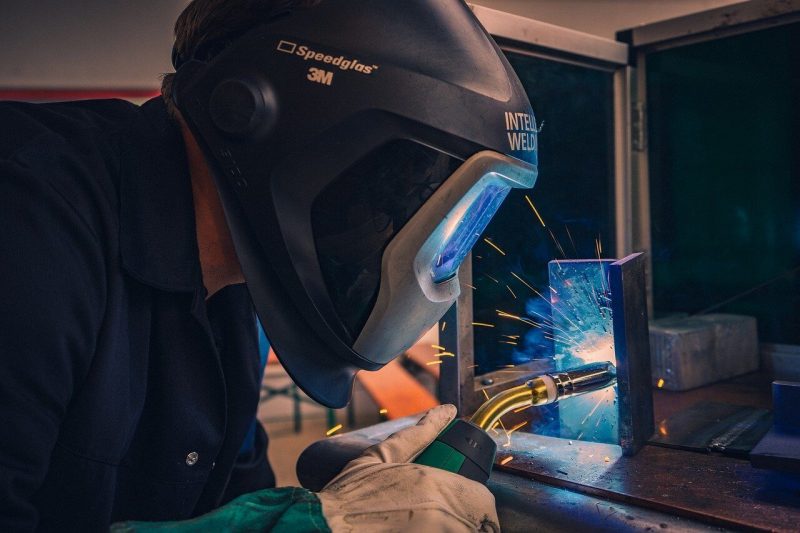A wire welder, also known as a MIG welder or a flux core welder, is a semi-automated welding process.
In fact, the simple welding process that a wire welder provides makes it the perfect welder for beginners.
A wire welder has several components that you need to know about before actually making your first weld.
Unlike a stick welder that uses a long “stick’ electrode, a wire welder uses either MIG welding wire or flux core wire.
So, a wire welder is a little bit more complex to set up and get running right than an arc “stick” welder, but once you get it set up the process of welding with a wire welder is pretty simple.
Using A Wire Welder As A MIG Setup
When you buy a wire welder you will have the option to buy one that you can hook up a gas tank to, or you can buy a wire welder that uses only flux core wire (gasless).
A word of advice if you’re a complete beginner to welding wanting to learn how to MIG weld…
Choose a wire welder that has the ability to hook a gas cylinder up to because you can use it as a MIG (Metal Inert Gas) setup, or use it as a flux core welder.
If you choose to use it as a MIG welder then you will have to get a bottle of 75/25 (argon/CO2), or straight CO2 so you have shielding gas provided at the weld puddle.
If you’re wondering what shielding gas is when using a wire welder, it’s used to protect the molten weld puddle from atmospheric gases that will weaken the weld if the weld puddle is exposed.
The advantage of using your wire welder as a MIG setup is that the welds produced are much nicer than with flux core wire. The weld bead with a MIG welder is smooth and very nice when done correctly, and there is no slag to chip away.
Overall, starting out with a wire welder using a MIG setup is the best way for beginners to learn because you can easily see the weld puddle, unlike the flux core process.
Using A Wire Welder As A Flux Core Setup
You can also choose not to use a gas bottle with your wire welder, and if you don’t have the capability to hook up gas to your welder, then you’ll have no choice but to use your wire welder with flux core wire.
Flux core wire is a hollow wire that is filled with an agent called flux. When an arc is created, the flux melts and acts as a shield from the atmospheric gases that will contaminate your welds and cause porosity.
So, it’s not necessary to use shielding gas with flux core like you would use with MIG. It’s important to note that when you are welding with a MIG setup, your wire welder uses solid wire because the gas protects the weld puddle.
Flux core is the easiest way to begin using a wire welder because there is no gas cylinder to set up. You can weld right out of the box!
Learn more: MIG Welding Wire Types
How Does A Wire Welder Work?
A wire welder works by first installing a roll of wire into the machine, and when you press the trigger on the MIG gun several things happen.
The wire begins to feed, the gas begins to flow, and the arc starts.
It’s important that you get several things correct before you start using your wire welder. The first thing you should do before you install your wire is look at the drive rolls inside the machine.
The drive rolls are like 2 pieces of bread and the wire is like the turkey. They put pressure on the wire so when you pull the MIG trigger the wire gets fed to the gun.
Since there are different size wires when using a wire welder you have to make sure the drive rolls are set correctly. There are little tracks on each drive roll that the wire feeds right into.
If you are running a small wire and you have the drive rolls set on too big of tracks, the drive rolls won’t get any traction and your wire welder will feed erratically. So, you might start trying to lay down a weld bead and your machine is not feeding the wire consistently into the weld puddle.
Once you have installed your wire correctly and it’s feeding through the correct drive roll size you need to get your voltage and wire feed speed set.
Again, if you set the wire feed speed wrong or the voltage is off your wire will feed erratically. There are charts on the inside of most wire welders that will tell you where your settings need to be according to the thickness of metal you’re welding.


